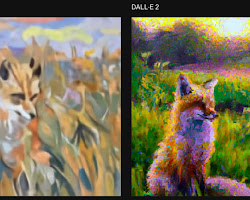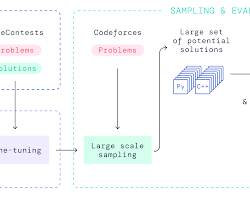"Explore real-world Generative AI examples and unlock its potential. Dive deep into how this fascinating technology is reshaping industries. Click now to learn more!"
 |
| Generative AI examples and tools 2023 ? |
Generative AI can produce outputs in the same medium in which it is prompted (e.g., text-to-text) or in a different medium from the given prompt (e.g., text-to-image or image-to-video). Popular examples of generative AI include .
- DALL-E 2: This tool can generate realistic images from text descriptions. For example, you could type in "a cat riding a unicycle on the moon" and DALL-E 2 would generate an image of that.
Art and design: Generative AI can be used to create new art, design, and fashion.
- ChatGPT: This tool can generate text, that is similar to human-written text. It can be used to create chatbots, generate realistic dialogue, or write different kinds of creative content.
- AlphaCode: This tool can generate code that is similar to human-written code. It can be used to help Developers write code more quickly and easily.
- GitHub Copilot: This tool is a plugin for GitHub that can help developers write code more quickly and easily. It uses generative AI to suggest code completions and other helpful hints.
- Bard: This is a large language model from Google AI that can generate text, translate languages, write different kinds of creative content, and answer your questions in an informative way.
These are just a few examples of generative AI-Tools. There are many other tools available, and the field is rapidly evolving.
Here are some of the applications of generative AI:
- Art and design: Generative AI can be used to create new art, design, and fashion. For example, it can be used to generate new patterns, textures, and designs.
- Music and entertainment: Generative AI can be used to create new music, movies, and games. For example, it can be used to generate new soundtracks, create new characters, or generate new levels.
- Education: Generative AI can be used to create new educational materials, such as interactive textbooks or personalized learning experiences.
- Business: Generative AI can be used to generate new marketing campaigns, create new product designs, or optimize supply chains.
- Research: Generative AI can be used to generate new hypotheses, create new models, or simulate real-world experiments.
Generative AI is a powerful tool with a wide range of applications. It is still in its early stages of development, but it has the potential to revolutionize many industries.
ChatGPT,Google Bard, DALL-E, Midjourney, and DeepMind.





